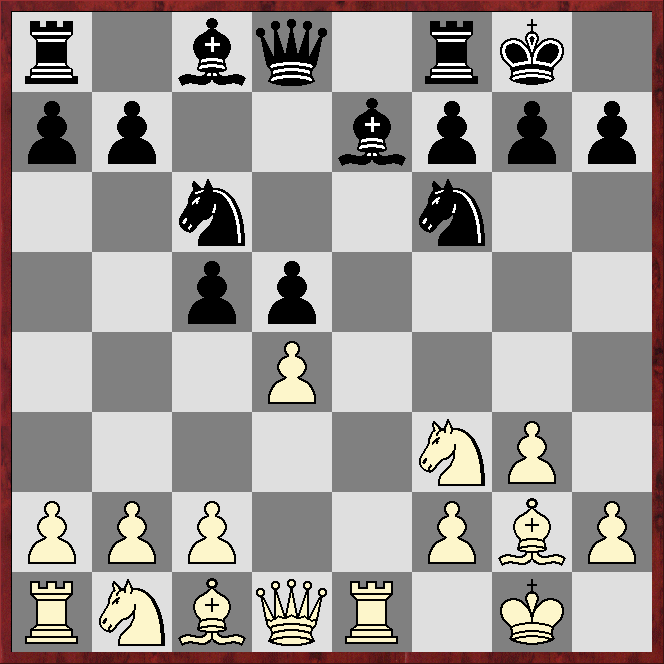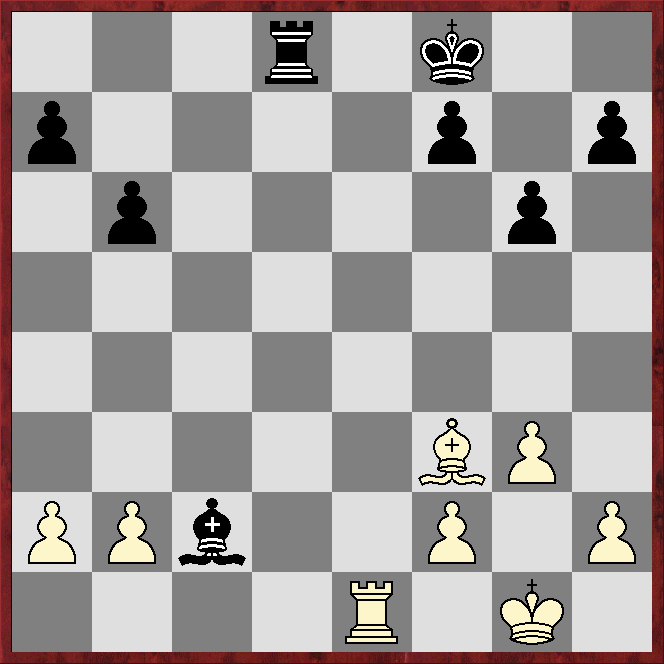Sicilian ...e6
1.e4 c5 2.Nf3 e6 3.g3!? Nc6 4.Bg2 d5 5.exd5 exd5 6.d4 Nf6 7.0-0 Be7 8.Re1 0-0
*****
*****
*****
*****
The pace of development is equal and both players have a firm stake in the centre. The white king's bishop is more active than its black counterpart, but the chief potential for imbalance lies in the centre, where Black could contract an isolated queen's pawn or push on with ...c4 to try to avoid this (an IQP could still arise if White replies with b3). Stockfish15 and Komodo13.02 reckon the game is equal.
9.Nc3 Be6 10.dxc5!? Bxc5
The engines reckon 10...d4!? 11.Na4 favours White.
11.Na4!?
This seems to be a novelty. Known is 11.Bg5?!, but the engines reckon Black is at least slightly better after 11...h6 or 11...Qb6.
11...Be7 12.Nd4?!
This may look natural, but after ...
12...Nxd4 13.Qxd4
... Black can exploit the awkward alignment of the white queen and remaining white knight by playing vigorously with 13...Rc8!?, meeting 14.Qd3 with 14...d4!?
13...Qc7
This is not so strong, especially as White can ignore the threat to the c pawn and instead develop with:
14.Bf4!?
Black can take the pawn, although 14...Qxc2 15.Rac1 Qg6 16.Rc7 gives White good compensation. However that is probably better for Black than ...
14...Bd6?! 15.Bxd6 Qxd6 16.Nc5
... which brings the white knight nicely into play.
16...b6 17.Ne4?!
Better, according to the engines, are 17.Nd3 and especially 17.Nxe6, eg 17.Nxe6 fxe6 and either 18.Bh3 (Komodo13.02) or 18.c4 (Stockfish15).
17...Nxe4 18.Bxe4 Rad8
Black can get rid of the isolani with 18...Qc5, forcing 19.Qxc5 bxc5 with an equal position, according to the engines.
19.Rad1 Qc5 20.Qd3 g6
Not 20...dxe4?? 21.Qxd8 etc.
21.Bf3 Bf5 22.Qd2 Qxc2 23.Qxc2 Bxc2 24.Rxd5 Rxd5 25.Bxd5 Rd8 26.Bf3 Kf8
*****
*****
*****
*****
27.Rc1?!
This is OK if White continues correctly, but it increases the chances of going wrong. Simple and good is 27.Kg2, and if, as in the game, 27...Rd2, then 28.Re2 is equal.
27...Rd2 28.b4?!
28.Re1, intending 29.Re2, is almost certainly better, although Black may have a tiny edge.
28...Bf5 29.a4?!
The horribly passive 29.Ra1 is probably better.
29...Rb2?!
This is good for Black, but winning a pawn with 29...Rd4 is simpler.
30.b5 Rb1!
This forces an exchange of rooks, after which White cannot defend the queenside.
31.Rxb1 Bxb1 32.Bd1 Ke7 33.Bb3
The engines' 33.f4 may be better, but Black has a large advantage.
33...f6 34.Kf1 Kf6 35.Ke2 Kc5 36.Kd2 Kb4 37.Bd5 Kxa4 38.Bc6 Kb4 39.Ke3 Ba2 40.h4 Bc4 (0-1, 47 moves).


Happy new year ! even 1 Re2 is holding , one of those key moments to take a deep breath and choose between active and passive
ReplyDeleteIt was arguably harder to find a bad move than a good one!
Delete